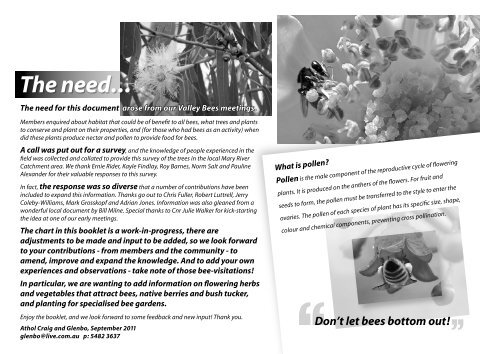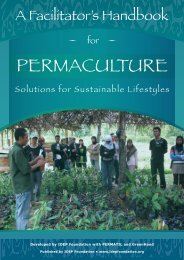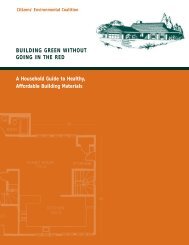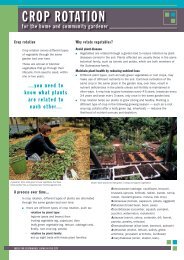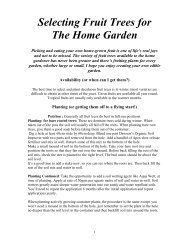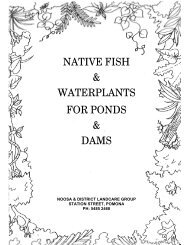Planting Trees to Attract Bees - Green Journey
Planting Trees to Attract Bees - Green Journey
Planting Trees to Attract Bees - Green Journey
Create successful ePaper yourself
Turn your PDF publications into a flip-book with our unique Google optimized e-Paper software.
The need...<br />
The need for this document arose from our Valley <strong>Bees</strong> meetings.<br />
Members enquired about habitat that could be of benefit <strong>to</strong> all bees, what trees and plants<br />
<strong>to</strong> conserve and plant on their properties, and (for those who had bees as an activity) when<br />
did these plants produce nectar and pollen <strong>to</strong> provide food for bees.<br />
A call was put out for a survey, and the knowledge of people experienced in the<br />
field was collected and collated <strong>to</strong> provide this survey of the trees in the local Mary River<br />
Catchment area. We thank Ernie Rider, Kayle Findlay, Roy Barnes, Norm Salt and Pauline<br />
Alexander for their valuable responses <strong>to</strong> this survey.<br />
In fact, the response was so diverse that a number of contributions have been<br />
included <strong>to</strong> expand this information. Thanks go out <strong>to</strong> Chris Fuller, Robert Luttrell, Jerry<br />
Coleby-Williams, Mark Grosskopf and Adrian Jones. Information was also gleaned from a<br />
wonderful local document by Bill Milne. Special thanks <strong>to</strong> Cnr Julie Walker for kick-starting<br />
the idea at one of our early meetings.<br />
The chart in this booklet is a work-in-progress, there are<br />
adjustments <strong>to</strong> be made and input <strong>to</strong> be added, so we look forward<br />
<strong>to</strong> your contributions - from members and the community - <strong>to</strong><br />
amend, improve and expand the knowledge. And <strong>to</strong> add your own<br />
experiences and observations - take note of those bee-visitations!<br />
In particular, we are wanting <strong>to</strong> add information on flowering herbs<br />
and vegetables that attract bees, native berries and bush tucker,<br />
and planting for specialised bee gardens.<br />
Enjoy the booklet, and we look forward <strong>to</strong> some feedback and new input! Thank you.<br />
Athol Craig and Glenbo, September 2011<br />
glenbo@live.com.au p: 5482 3637<br />
What is pollen?<br />
Pollen is the male component of the reproductive cycle of flowering<br />
plants. It is produced on the anthers of the flowers. For fruit and<br />
seeds <strong>to</strong> form, the pollen must be transferred <strong>to</strong> the style <strong>to</strong> enter the<br />
ovaries. The pollen of each species of plant has its specific size, shape,<br />
colour and chemical components, preventing cross pollination.<br />
Don’t let bees bot<strong>to</strong>m out!


